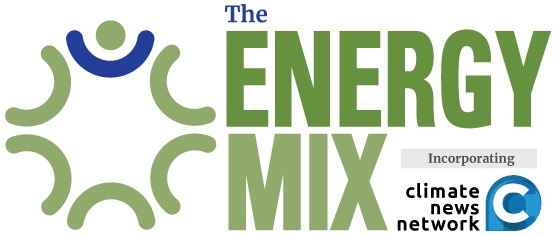More Renewables, High Emissions as IEA Projects 3.9% Annual Electricity Growth
Global electricity use is set to grow at a torrid pace of 3.9% per year through 2027, and renewable energy sources like solar, wind, and hydropower should be able to meet 95% of the additional demand, the International Energy Agency (IEA) concludes in a report release this morning.
“Over the next three years, global electricity consumption is forecast to rise by an unprecedented 3,500 TWh (terawatt hours),” the IEA writes in its Electricity 2025 report, driven largely by rising industrial consumption, demand for air conditioning, electrified transport, and the rapid expansion of data centres. Some 85% of the total, which is equivalent to 400 gigawatts (that’s 400 billion watts) of new installed capacity running 100% of the time, will come from emerging and developing economies.
“This corresponds to adding more than the equivalent of a Japan to the world’s electricity consumption each year,” the IEA says.
The report shows the sector’s emissions plateauing, but not declining, as “renewables limit fossil-fired output” and coal continues to decline.
From 2025 to 2027, the IEA foresees “ever cheaper solar PV” covering roughly half of electricity demand growth, up from 40% in 2024, with about 600 TWh of new capacity coming online each year. The report has nuclear generation setting production records through 2026 and 2027 but only meeting about 5% of the new demand, while gas-fired power production grows 1% between 2025 and 2027, down from 1.3% in 2023 and 2.4% in 2024.
But the Paris-based IEA says greenhouse gas emissions from power generation still increased 1% in 2024, with a total of 13.8 billion tonnes of climate pollution making electricity the world’s highest-emitting sector. Over the next three years, the IEA projects that emission declines in the European Union and the United States will be “mostly offset” by increases in Southeast Asia and India, with China—where more than half of the world’s remaining coal-fired generation takes place—continuing as the “largest source of uncertainty.”
The overall surge in global demand represents “a sharp acceleration over the 2.5% increase in 2023, when strong gains in China, India, and Southeast Asia were tempered by declines in advanced economies,” the IEA says.
Dave Jones, insights director at global energy think tank Ember, noted that the IEA’s projection of demand growth over the next three years came in higher than its previous projection of 3.4% for 2024-2026—and the difference will stretch renewable energy to the limits of its potential based on current levels of investment.
“The Age of Electricity has to be the Age of Clean Electricity to realize the cost, security, and climate benefits of electrification,” Jones said in a release. “Following the IEA’s increased forecast for demand growth, new clean generation is now set only to meet the rise—not exceed it. More investment in clean electricity is needed, otherwise coal and gas generation could be at the same record levels in 2027 as they were in 2024.”
Veteran Canadian energy modeller Ralph Torrie, director of research at Corporate Knights, cautioned against projecting a “single year uptick in consumption” into the future.
“The old school ‘trend into destiny’ forecasting that has characterized the power sector’s methods is what has got us in so much trouble in the past,” Torrie told The Energy Mix in an email. “There will be growth in electricity consumption as buildings and transport electrify, but obsolete forecasting methods overestimate the sources of growth (e.g. AI) and underestimate the deep efficiency gains that come with electrification and the significant decline in power consumption that will correspond to the winding down of the fossil fuel industry itself.”
He added that Canada can electrify its economy “with less than a doubling of electricity consumption, and if we do it in a smart and deliberate way it will not only back us out of the greenhouse gas trap but give us a more resilient and sustainable energy system, revitalize employment and local economic development, and strengthen our ability to help other countries with the transition.”
Electricity 2025 cites winter storms in the United States, hurricanes in the Atlantic, damage to transmission infrastructure in Australia, and reduced hydropower output due to drought as examples of extreme weather that caused “widespread power disruptions” last year.
“Having sufficient dispatchable capacity and storage, among other flexibility options such as demand-side response and interconnections, will be essential for enhancing electricity security,” the IEA writes. “When planning for resource adequacy to reliably meet electricity demand with available supply, taking into consideration the unpredictable nature of weather events is becoming increasingly important.”
Cover photo: David Dodge/Green Energy Futures via Flickr



